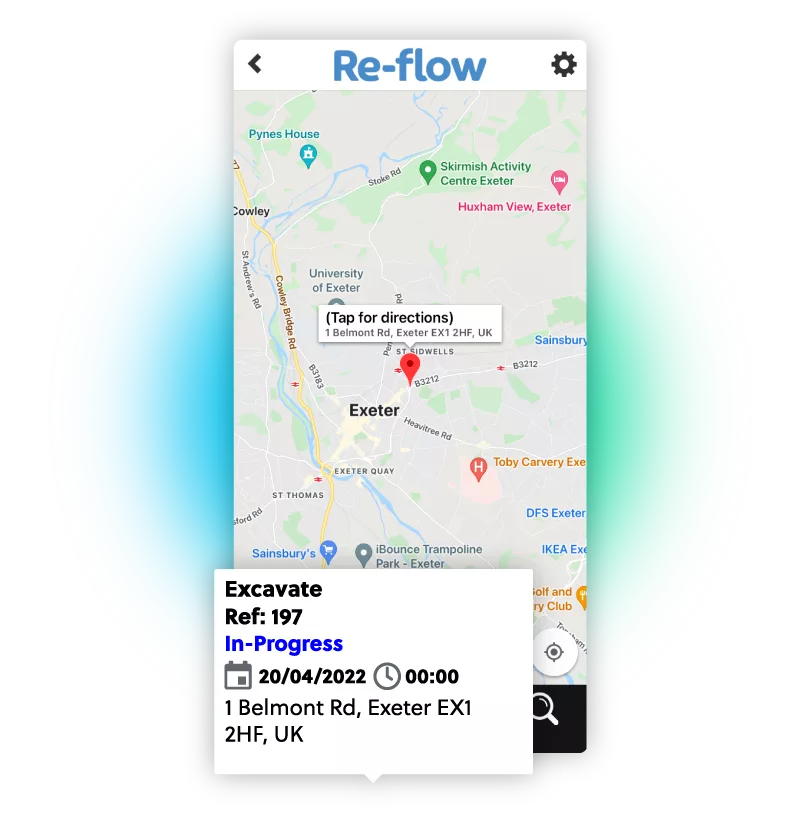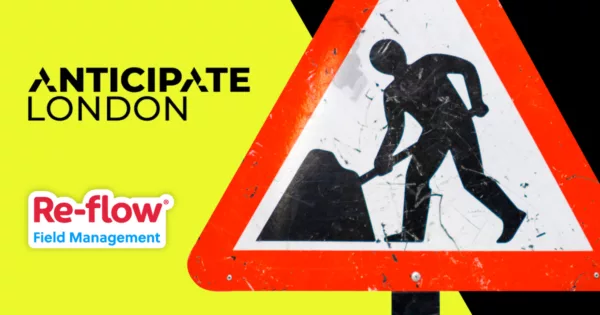
News
How can field management solutions protect against costly HSE violations?
Earlier this year a railway infrastructure company was faced with a half million pound fine as a consequence of failing to prevent danger to workers – a punishable offence under the Health and Safety at Work Act 1974. The incident, which originally took place in July of 2014 resulted in one worker suffering serious injuries, including a broken pelvis, several broken ribs and damage to their lungs and stomach. Despite having made a recovery, the long-term consequences of this preventable incident will persist for many years to come, as it is likely the worker will be unable to return to full-time employment.
During the investigation that followed this incident, the Office of Rail and Road (ORR) identified multiple key failures made by the company that led to the tragedy. Among these was the failure to brief teams on proper procedures, rectify nonconformities and enforce mandatory processes that would ensure works on site would proceed safely and efficiently.
They had opportunities to correct working practices and make the work safer, but these opportunities were missed. The result led to extremely serious injuries to one of its employees.

HM Chief Inspector of Railways
ORR
Following an incident like this, firms are expected to conduct internal reviews into what went wrong, utilising audit trails and form data to identify potential risks and nonconformities which may have been overlooked, that changes needed to rectify them, and ultimately, how similar events incidents can be prevented in the future.
Upon conducting such a review, the company in question inevitably found multiple areas where hazards were overlooked and identified areas for future improvement. Despite this, the investigation from the ORR found that there were already procedures and practices in place that, if enforced, would have likely prevented the incident from occurring. Yet, without strictly enforced compliance and cut corners, such processes do little in the way of ensuring worker’s safety.
There can be many factors as to why a firm chooses to compromise on their HSE compliance – strict deadlines putting pressure on workers to take shortcuts, management lost in a whirlwind of work, low profitability, or simple carelessness. Whatever the cause may be, it’ll likely be exacerbated by inefficient working procedures forming the core of a business. This can include outdated paper systems, manual processes, information siloes caused by fragmented legacy software or a poorly equipped digital solution that cannot match a business’s unique needs.
One solution which has proven to work within the highways industry, is the use of field management software – a digital solution that streamlines communication between remote sites and the back office, uniting all crucial operational processes under one umbrella. Recently, our software - Re-flow Field Management - has emerged at the forefront of the sector, being utilised by over 100 firms in the sector to revolutionise their HSE management. Now, we intend to make our first foray into the rail sector, believing that our software’s features can make preventable accidents like this one a relic of the past.
Based on aggregated data from a survey of our clients, companies using the software recorded HSE standards increasing by 50%, auditability increasing by 60%, and compliance reaching 100%. DWG Infraco, who are among the first to use the software in a rail setting, have already reported impressive results following implementation.
We got introduced into Re-flow about 18 months ago by another company that we were doing some sub-contract work with. We were all paper and manual, and it was a complete culture change for everybody. Now we’ve got Ansel, who’s our super user, and we live and breathe by it. It does all our RAMS for all our projects, we do all our reporting, all our site documentation, toolbox talks, daily recording of site activities. It’s made a phenomenal difference to what we do when it comes to ISO audits or record keeping, because everything’s at our fingertips. We don’t have to go scratching around in piles for bits of paper, so it’s making our life a lot easier. It’s been a great change.

Director
DWG Infraco
What are the exact changes field management software such as Re-flow enables business to make, resulting in such stellar results in HSE management and working to preventing serious incidents such as the one in question?
Thorough Risk Assessment Processes
In terms of the earlier example, the investigation following the incident identified the job site as having unstable ground conditions. If correct procedures were followed, this would have also been identified during a risk assessment prior to works commencing.
With Re-flow, digital forms such as the dynamic risk assessment ensure a full assessment of potential hazards, utilising intelligent formulas and calculations to automatically identify consequences, probability, who is at risk and what risk reduction is in place, ultimately generating a final risk rating based on the data.
For a job with severe potential consequences and high incident probability, Re-flow's dynamic risk assessment would have generated a high final risk rating, which would utilise automated workflows to instantly put works on hold and trigger a notification to management that actions need to be taken to mitigate the hazards before work could continue. All this would then be fed back to operatives on site, who can instantly view communicated updates through our mobile app.

Toolbox Talks
Another finding from the ORR investigation was the lack of adequate briefing on potential hazards and correct working practices before works commenced.
Within Re-flow, this could have been addressed through enforcing toolbox talks as part of a job's workflow. These can be scheduled to take place at the beginning of the workday and make completion mandatory before a worker can participate in works. All operatives assigned to the task to must submit a unique digital signature that proves their participation in a toolbox talk, with time, date and location attached for further auditablity.
Qualifications, certifications and toolbox talks are then stored and accessible through the desktop dashboard, ensuring all operatives are properly qualified and briefed when assigning them to a task, triggering conflicts in the scheduler if adequate training is not present.

Asset Management / Compliance
The ORR also found that even though trench supports, which could have prevented the incident altogether, were delivered to the job site, no effort was made to enforce their use before works began.
Through digital forms, Re-flow enforces compliance on all elements of a task, such as proper the deployment of safety equipment. Forms can be built and customised to require photos tagged with time, date and location that prove workers are complying with correct safety standards before further works can proceed.

Compliance Checks and Site Visits
The final safeguard that could have prevented the incident would be a site visit to ensure and enforce safety standards. The issue with less efficient, fragmented processes, especially paper-based ones, is the lag time between admin staff being notified of works commencing and site inspectors being notified. Even then, once a site inspection report would be completed, it would have to be delivered to the foreman before the issue can be rectified. The compounding of these delays can result in long periods of time where workers are operating in unsafe environments, significantly increasing the chance of accidents occurring.
With Re-flow, site inspectors can be instantly notified once a job is in progress. Inspections are conducted, and all nonconformities are documented and photographically evidenced with time, date and location stamping. These are then marked with a nonconformity rating ranging from low to high and sent to the foreman for rectification. Rectifications are made, photographically evidenced and submitted for approval from the inspector before work can continue.

Ultimately, the root of many preventable accidents on-site is inefficient, unreliable HSE processes compounded by increasing pressure on business owners to meet stricter and stricter deadlines to remain profitable. When the pressure builds, corners are cut to save time and money. Continuing to operate on outdated systems can cost workers their health, lives and livelihoods, and a single shortcut could cause irreparable damage to a business. New technologies, including Re-flow Field Management Software, have afforded many businesses struggling with these exact issues the breathing room to enable correct processes and enforce compliance in a sustainable manner, without detriment to their workers. The real-time data gathered from digital forms allows these firms to identify and act upon the challenges and opportunities ahead, keeping operations safe and profitable.





